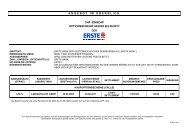GB00_erste lage_E - Erste Group
GB00_erste lage_E - Erste Group
GB00_erste lage_E - Erste Group
Create successful ePaper yourself
Turn your PDF publications into a flip-book with our unique Google optimized e-Paper software.
In March 2000 <strong>Erste</strong> Bank launched a project in collaboration with internationally recognised consultants<br />
to define and measure operational risk throughout the entire bank for the first time. After<br />
completing the initial phase of the project for <strong>Erste</strong> Bank AG at the end of the first quarter of<br />
2001, this approach is to be gradually implemented throughout the <strong>Group</strong>.<br />
This project will lay the groundwork for rational cost-benefit decisions on measures to reduce,<br />
limit and mitigate operational risks (e.g. for possible insurance solutions). This will allow <strong>Erste</strong><br />
Bank to integrate operational risks into risk-adjusted performance measurement based on Valueat-Risk.<br />
Risk-absorbing capacity and risk-adjusted performance measurement<br />
The overall measure of risk applied at bank as well as <strong>Group</strong> level is the Economic Capital that<br />
a bank has to hold in order to cover risk. This amount is defined as the annual loss which, with<br />
a very high probability, will not be exceeded. The level of probability is determined on the basis<br />
of capital market default analyses. The objective of calculating this figure is to determine the<br />
amount of capital needed in order to secure solvency of <strong>Erste</strong> Bank even in extreme loss scenarios.<br />
Furthermore, this figure enables comparative measurement and aggregation of all risks.<br />
The central instrument for securing the Bank’s solvency is risk-absorbing capacity. In this calculation,<br />
a multiple-stage process is used to compare the Economic Capital to the resources (earning<br />
power, reserves and equity) available to cover potential losses. Aside from the risk actually<br />
measured, a safety buffer and the existing risk limits are taken into account. Risk-absorbing capacity<br />
thus serves as a limit for all risk activities in <strong>Erste</strong> Bank.<br />
Economic Capital is also a substantial component used in calculating the risk-adjusted return on<br />
capital (RAROC). This figure compares returns with the risks that are taken in order to achieve<br />
them, using Economic Capital as risk measure. Full implementation of RAROC will allow the entire<br />
bank to be managed on the basis of risk/return ratios. Thus, Economic Capital and RAROC combine<br />
risk limitation aimed at preserving the Bank’s solvency and active risk and capital management<br />
geared towards increasing enterprise value.<br />
<strong>Erste</strong> Bank 2000 111



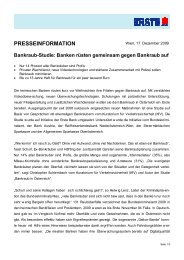
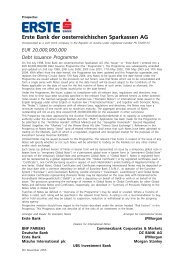
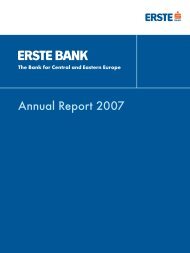
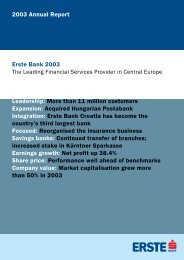


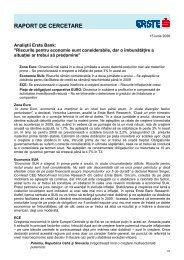
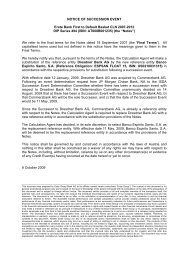

![Fact Sheet Erste Campus [pdf; 181.2 KB] - Erste Group](https://img.yumpu.com/3839392/1/184x260/fact-sheet-erste-campus-pdf-1812-kb-erste-group.jpg?quality=85)
